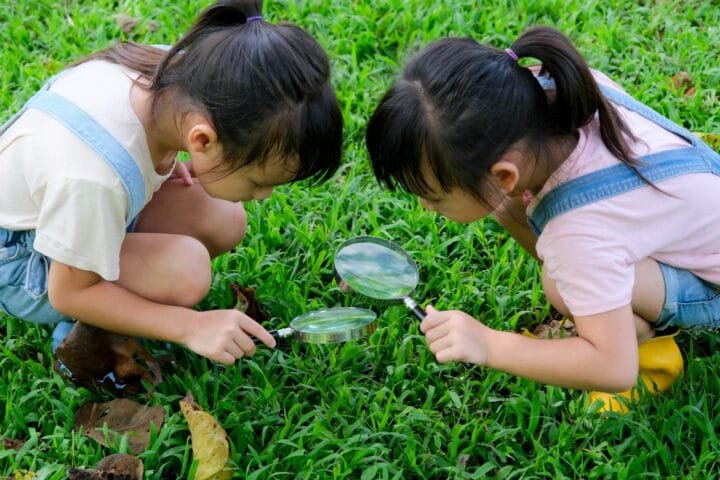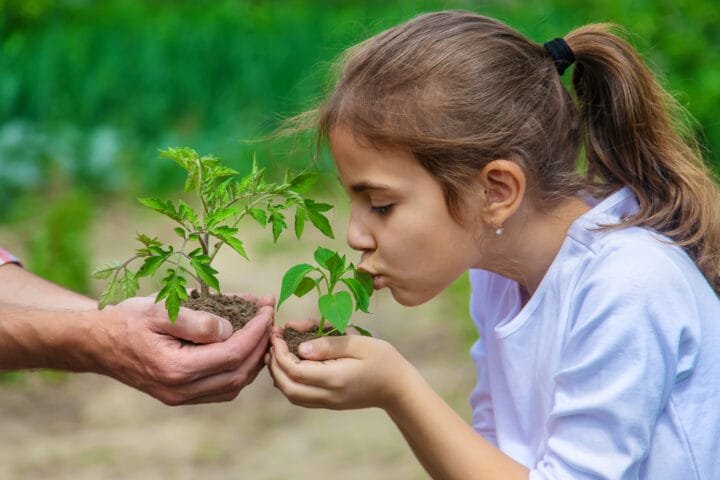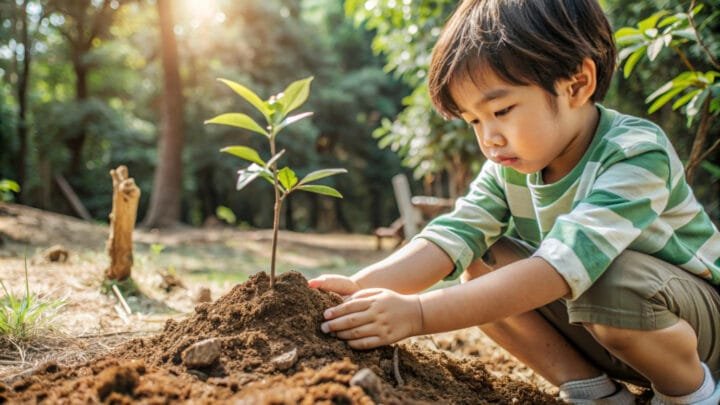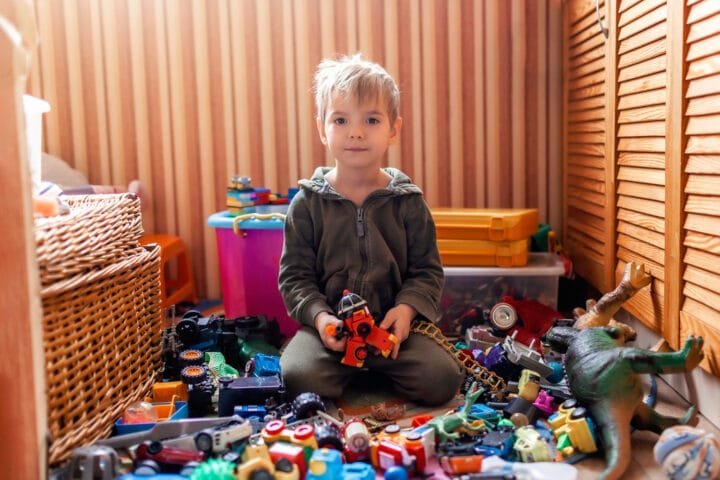The Ultimate Guide to Teaching Kids About Ecosystems
As parents, we’re constantly seeking ways to ignite our children’s curiosity and connect them with the world around them. What better way than to delve into the fascinating world of ecosystems? This guide equips you with the knowledge and tools to introduce your kids to the wonders of nature, fostering a lifelong appreciation for the environment and inspiring them to become stewards of our planet. Remember, as a parent, you play a crucial role in your child’s environmental education. Your enthusiasm and support can make a significant difference in their learning journey.
What is an Ecosystem?
Imagine a bustling city teeming with life. Picture diverse neighborhoods with unique characteristics (habitats), various jobs and responsibilities (roles), and a population composed of individuals with different needs and contributions (plants and animals). This vibrant interconnectedness is much like an ecosystem! An ecosystem is a dynamic community of living organisms interacting with their physical environment, working together in a delicate balance. This includes everything from the tiniest microorganisms in the soil to the majestic trees reaching for the sky and the sun, air, and water that sustain them. It’s a world of beauty and diversity that we can’t wait to share with our children.
Why is it important for kids to learn about ecosystems? Understanding ecosystems helps children appreciate the interconnectedness of life and their place within the intricate web of nature. It fosters respect for all living things, encourages environmental stewardship, and sparks a sense of wonder and curiosity about the world around them. We can’t wait to see the excitement and curiosity that learning about ecosystems will spark in our children.

Exploring Different Ecosystems
Forests: The Earth’s Green Guardians
Forests are more than just collections of trees; they are complex ecosystems that play a vital role in maintaining the health of our planet. They act as carbon sinks, absorbing carbon dioxide from the atmosphere and releasing oxygen through photosynthesis, helping to regulate our climate and mitigate the effects of global warming. Forests also provide habitats for a vast array of plants and animals, contributing significantly to biodiversity. Did you know that forests cover about 30% of the Earth’s land surface and contain 80% of the world’s terrestrial biodiversity?
When explaining forests to children, use analogies they can relate to. For example, describe the forest floor as a “busy carpet” teeming with insects, worms, and other decomposers that break down fallen leaves and return nutrients to the soil. Explain how the understory is like a “middle floor” with shrubs and young trees that provide shelter for animals like deer and squirrels. The canopy, the “top floor” of the forest, is where the tallest trees reach for the sunlight, providing homes for birds, monkeys, and other creatures that thrive in the treetops.
Introduce the different types of forests, each with its unique characteristics and inhabitants:
- Tropical Rainforests: These lush forests are found near the equator and experience high rainfall and warm temperatures year-round. They are incredibly biodiverse, housing an estimated 50% of the world’s plant and animal species. Imagine the Amazon rainforest with its vibrant colors, exotic animals like jaguars and macaws, and towering trees draped in vines.
- Temperate Forests: These forests experience four distinct seasons, with trees that change color in the fall before shedding their leaves for the winter. They are home to a variety of deciduous trees like oak, maple, and beech, as well as animals like deer, bears, and foxes. Think of the forests in North America and Europe, where you can witness the beauty of autumn leaves and the changing seasons.
- Boreal Forests (Taiga): These forests are found in the northern regions of the globe and are characterized by long, cold winters and short, cool summers. They are dominated by coniferous trees like pine, spruce, and fir, which can withstand harsh conditions. Imagine the vast forests of Canada and Russia, home to animals like moose, wolves, and lynx.
Trees are the foundation of forest ecosystems. They provide food and shelter for animals, and their roots help prevent soil erosion. However, forests are more than just trees; animals also play an integral part. Bees and other insects pollinate flowers, ensuring the reproduction of plants. Birds disperse seeds, helping forests spread and regenerate. Predators, such as wolves and mountain lions, help regulate prey populations, maintaining balance within the ecosystem.
Oceans: The Blue Heart of Our Planet
Oceans cover over 70% of our planet and hold 97% of the Earth’s water. They are vast and mysterious, teeming with life that ranges from microscopic plankton to the largest animal on Earth, the blue whale. Oceans play a crucial role in regulating our climate, providing food, and supporting countless ecosystems.
When introducing oceans to children, emphasize their vastness and the incredible variety of creatures that live within them. Explain the different zones of the ocean:
- The Sunlit Zone (Epipelagic Zone): This zone extends from the surface to about 200 meters deep. Sunlight penetrates this zone, allowing photosynthesis to occur. This is where most marine life thrives, from tiny plankton to massive whales. Phytoplankton, microscopic plants, form the base of the ocean food web, providing food for a vast array of creatures.
- The Twilight Zone (Mesopelagic Zone): This zone lies between 200 and 1,000 meters deep. Light is dim here, and many animals have adapted to bioluminescence, producing their light to attract prey or confuse predators. Strange and wonderful creatures like lanternfish, hatchet fish, and viperfish thrive in this mysterious realm.
- The Midnight Zone (Bathypelagic Zone): This zone extends from 1,000 to 4,000 meters deep. This is a world of perpetual darkness, immense pressure, and frigid temperatures. Here, you might encounter bizarre creatures like anglerfish with their glowing lures, gulper eels with their enormous mouths, and deep-sea hatchet fish with their tubular eyes that point upwards to detect the faintest glimmer of light.
- The Abyssal and Hadal Zones: These are the deepest parts of the ocean, extending from 4,000 meters to the deepest trenches, which can reach depths of over 10,000 meters. These zones are home to some of the most extreme life forms on Earth, including giant tube worms that thrive near hydrothermal vents, deep-sea corals that form vibrant ecosystems in the darkness, and mysterious creatures like the dumbo octopus and the goblin shark.
Coral reefs are often called the “rainforests of the sea” due to their incredible biodiversity. They are built by tiny animals called corals, which secrete calcium carbonate skeletons that form the reef structure. Coral reefs are incredibly diverse, supporting an estimated 25% of all marine life! They provide food and shelter for a vast array of fish, invertebrates, and other creatures.
However, coral reefs are fragile ecosystems threatened by pollution, overfishing, and climate change. Rising ocean temperatures can trigger coral bleaching events, where corals expel the algae that live within their tissues and provide them with food, ultimately leading to their death.
Deserts: Life on the Edge
Deserts might seem barren and bleak at first glance, but they are teeming with life that has adapted to survive in extreme conditions. Deserts cover about one-fifth of the Earth’s land surface and receive less than 20 inches of rain per year. Despite the harsh conditions, deserts are home to a surprising diversity of plants and animals that have evolved remarkable strategies to cope with limited water and extreme temperatures.
Cacti are iconic desert plants, Master of Water conservation. They store water in their thick stems, and their spines protect them from thirsty animals. Some cacti, like the saguaro cactus, can grow up to 60 feet tall and live for over 200 years! Camels are another example of desert adaptation. They can go for days without drinking water, thanks to their ability to store fat in their humps and minimize water loss through sweating and urination. Fennec foxes have large ears that help them radiate heat and hear prey moving underground. Even tiny creatures like the desert tortoise have adapted to survive in this arid environment. They can store water in their bladders for up to a year, allowing them to endure long periods of drought.
Water is precious in the desert. Every drop counts! Desert ecosystems rely on delicate balances. Overgrazing and human development can disrupt these balances and lead to desertification, where fertile land turns into barren desert. This process can be exacerbated by climate change, which is leading to increased temperatures and prolonged droughts in many desert regions.
Grasslands: A Sea of Green
Grasslands are vast expanses of grasses and wildflowers that support a variety of grazing animals and predators. They play a vital role in carbon storage, water filtration, and biodiversity conservation. Grasslands cover about one-quarter of the Earth’s land surface and are found on every continent except Antarctica.
Grasslands come in different flavors, each with its unique characteristics and inhabitants:
- Savannas: These tropical grasslands are found in Africa, Australia, and South America. Scattered trees and shrubs characterize them and are home to a diverse array of animals, including giraffes, elephants, lions, and zebras.
- Prairies: These temperate grasslands are found in North America, Europe, and Asia. They have fertile soil and are often used for agriculture. Prairies are home to animals like bison, prairie dogs, and coyotes.
- Steppes: These cold, dry grasslands are found in Asia and Eastern Europe. Short grasses and shrubs characterize them and are home to animals like gazelles, wild horses, and eagles.
Fire plays a surprising role in grasslands. It helps clear out dead plants and allows new growth to flourish. Without fire, some grasslands would eventually turn into forests. Fire also helps maintain the diversity of plant and animal life in grasslands by preventing any single species from dominating.

The Web of Life
Help children understand the interconnectedness of life within ecosystems by introducing the concept of food chains and food webs. Explain how energy flows from the sun to producers (plants) to consumers (animals) and finally to decomposers (bacteria and fungi). This flow of energy is essential for the survival of all living things within an ecosystem.
Use simple examples to illustrate food chains, such as:
Sun → Grass → Rabbit → Fox
Sun → Algae → Fish → Shark
Explain how food webs are more complex, with interconnected food chains representing the flow of energy through an ecosystem. For example, a fox might eat not only rabbits but also mice, birds, and other small animals. These interconnected relationships create a complex web of life, where each organism plays a role in the overall balance of the ecosystem.
In every ecosystem, there are three main types of organisms:
- Producers: These are the foundation of the food chain. They are plants and algae that capture the sun’s energy and convert it into usable forms through photosynthesis. They produce the organic matter that sustains all other life in the ecosystem.
- Consumers: These are organisms that obtain energy by consuming other organisms. They can be herbivores (plant-eaters), carnivores (meat-eaters), or omnivores (both).
- Decomposers: These are the recyclers of the ecosystem. They break down dead plants and animals, returning essential nutrients to the soil, where plants can use them to grow and thrive. Decomposers include bacteria, fungi, and various invertebrates like earthworms and millipedes.
Human Impacts on Ecosystems
Children need to understand that human activities can have a significant impact on ecosystems. Discuss the following topics:
- Pollution: Pollution contaminates our air, water, and soil, harming wildlife and disrupting natural processes. Industrial activities release harmful chemicals into the atmosphere, contributing to acid rain and smog. Agricultural runoff pollutes waterways, causing algal blooms and oxygen depletion. Plastic waste accumulates in our oceans, endangering marine life and disrupting food chains.
- Deforestation: Deforestation, the clearing of forests for agriculture, logging, and development, destroys habitats and fragments ecosystems. This loss of habitat can lead to the decline and extinction of species. Deforestation also contributes to climate change by reducing the number of trees that absorb carbon dioxide from the atmosphere.
- Climate Change: Climate change is causing widespread disruptions to ecosystems around the world. Rising temperatures are altering weather patterns, leading to more frequent and severe droughts, floods, and wildfires. These extreme events can devastate ecosystems, causing loss of life and habitat destruction. Climate change is also causing sea levels to rise, threatening coastal ecosystems and displacing human populations.

Activities to Explore Ecosystems with Your Kids
Learning about ecosystems should be a hands-on experience. Here are some fun activities to engage your children and deepen their understanding of the natural world:
- Nature Walks and Scavenger Hunts: Explore your local park, forest, or beach. Please encourage your children to observe the plants and animals, identify different species, and look for signs of their interactions. Create a scavenger hunt list with items like “a feather,” “a seed pod,” or “evidence of an animal eating.”
- Building a Terrarium or Aquarium: Create a mini ecosystem in a jar! This is a great way for children to observe how plants and animals interact with each other and their environment. A terrarium is a closed ecosystem that contains plants and soil, while an aquarium is an aquatic ecosystem that houses fish and other aquatic creatures.
- Creating Nature-Inspired Art: Use natural materials like leaves, sticks, pinecones, and stones to create art. Paint a landscape, build a birdhouse, or make a nature collage. Encourage creativity and imagination while incorporating elements of the natural world.
- Growing a Garden: Plant a seed and watch it grow! This is a hands-on way for children to learn about the life cycle of plants and the importance of soil, water, and sunlight. Start a small garden in your backyard or even in a pot on your windowsill.
- Visiting Zoos, Aquariums, and Nature Centers: These places offer amazing opportunities to learn about different ecosystems and the animals that live in them. Zoos and aquariums house a variety of animals from around the world, providing educational exhibits and interactive experiences. Nature centers offer guided walks, workshops, and exhibits that focus on local ecosystems and conservation efforts.
Recommend Books
This classic series engages young readers with its blend of science and humour. Ms. Frizzle takes her class on a wild ride through the atmosphere, exploring the causes and effects of climate change and inspiring kids to take action.
This timeless tale delivers a powerful message about environmental conservation and the importance of protecting our planet. Through whimsical rhymes and vibrant illustrations, Dr. Seuss teaches children about the consequences of deforestation and the need to speak up for the trees.
Dive into the depths of the ocean with this beautifully illustrated book. It explores the fascinating world of marine life, from tiny plankton to giant whales, and reveals the intricate connections within ocean ecosystems.
This visually stunning book takes readers on a journey through the Earth’s systems, exploring everything from the water cycle and weather patterns to the layers of the Earth and the diversity of life.
This interactive book invites children to explore the world of endangered animals through intricate illustrations and fascinating facts. It highlights the threats facing these creatures and inspires kids to become advocates for conservation.
Conclusion: Nurturing Future Environmental Stewards
By fostering a love for nature and an understanding of ecosystems in your children, you are nurturing the next generation of environmental stewards. Please encourage them to appreciate the interconnectedness of life, respect all living things, and take action to protect our planet. Even small actions, like reducing waste, conserving water, and planting trees, can make a big difference. Together, we can inspire our children to become guardians of the Earth and ensure a healthy and sustainable future for all.
FAQs
Imagine an ecosystem like a bustling city! There are different neighborhoods (habitats) like parks, forests, or oceans where plants and animals live. Each plant and animal has a different job or responsibility (role) in their neighborhood. Just like in a city, everyone needs resources like food, water, and shelter, and they interact with each other in different ways. For example, bees help flowers make seeds, and birds eat the seeds and spread them to new places. It’s all about teamwork and keeping things in balance!
Understanding ecosystems is like unlocking a secret code to the natural world! It teaches children to appreciate how everything is interdependent and how their actions impact the planet. Learning about ecosystems ignites curiosity, encourages them to care for the environment, and opens their eyes to the wonders all around them – maybe one day, they’ll even become scientists or explorers themselves!
Turn learning into an adventure! Go on nature walks together and see how many different plants and animals you can find. Create a scavenger hunt in your backyard or a local park. Build a mini ecosystem in a jar (a terrarium) and watch it come to life. Make nature-inspired art with leaves, sticks, and stones. You can even visit a zoo or aquarium and see amazing creatures from all over the world. The possibilities are endless!
Ecosystems are everywhere! Your backyard is a great place to start. Look for birds building nests, squirrels burying nuts, and flowers blooming. A local park with its trees, ponds, and trails is another fantastic example. Even a potted plant on your windowsill can be an ecosystem. Encourage your child to observe the plants and animals, identify their roles, and consider how they interact with each other and their environment.
Even small actions can make a big difference! Teach your child about conserving water by turning off the tap while brushing their teeth and taking shorter showers. Please encourage them to reduce waste by using reusable containers and recycling; planting trees is another great way to help the environment and instill respect for wildlife by teaching your child to appreciate all living beings. Foster environmental responsibility by encouraging your child and empowering them to become a steward of Earth!
Related Posts













































































